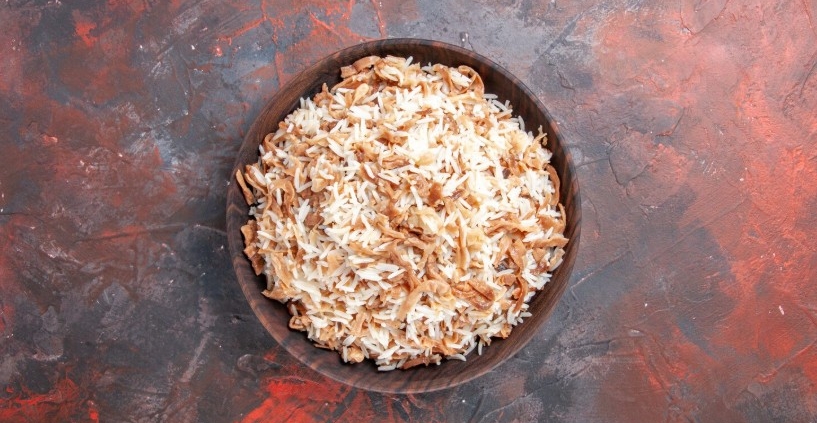The Ultimate Guide to Brown Basmati Rice: Nutrition, Cooking, and Recipes
Introduction
In today’s health-conscious world, choosing the right staple for your meals can make a significant difference in overall wellness. Among the myriad of grains available, brown basmati rice has gained attention for its unique combination of flavor, texture, and nutritional benefits. Known for its long grains, aromatic fragrance, and nutty taste, this rice variety is more than just a side dish—it’s a versatile ingredient that complements a variety of cuisines. For those looking to make smarter dietary choices without compromising on taste, understanding brown basmati rice is essential.
Nutritional Benefits of Brown Basmati Rice
Unlike white rice, brown basmati rice is minimally processed, retaining its bran and germ layers. This gives it a higher fiber content, which is essential for maintaining digestive health and regulating blood sugar levels. The fiber also promotes a feeling of fullness, making it a great choice for those managing weight.
Additionally, brown basmati rice is rich in essential vitamins and minerals such as magnesium, phosphorus, and B vitamins. These nutrients support bone health, energy production, and overall metabolism. Unlike highly processed grains, brown basmati rice has a lower glycemic index, which means it releases energy slowly and helps maintain steady blood sugar levels. This makes it a particularly suitable option for individuals with diabetes or those looking to prevent blood sugar spikes.
The presence of antioxidants in brown basmati rice further contributes to its health benefits. Antioxidants help combat oxidative stress in the body, reducing the risk of chronic diseases and supporting overall cellular health. Incorporating this rice into a balanced diet can provide both nourishment and protection against nutrient deficiencies.
Cooking Brown Basmati Rice Perfectly
Cooking brown basmati rice requires a slightly different approach compared to white rice due to its intact bran layer. This outer layer not only provides nutrients but also requires a bit more time to soften during cooking. Here’s a simple method to achieve perfectly cooked brown basmati rice:
- Rinse the Rice: Begin by rinsing the rice under cold water to remove excess starch. This helps prevent the grains from sticking together.
- Soak (Optional): Soaking for 20-30 minutes can reduce cooking time and result in fluffier grains.
- Cooking Ratio: Use 2.5 cups of water for every 1 cup of rice. Bring the water to a boil, then reduce the heat to low, cover, and simmer for 35-40 minutes.
- Rest: Once cooked, let the rice sit covered for 5-10 minutes before fluffing with a fork. This allows the grains to firm up and maintain their separate texture.
For added flavor, consider cooking the rice in vegetable or chicken broth instead of water, or adding a pinch of salt and spices like cardamom or bay leaves. The aromatic nature of brown basmati rice makes it a perfect accompaniment to curries, stir-fries, and grilled dishes.
Creative Recipes Using Brown Basmati Rice
Brown basmati rice is incredibly versatile, lending itself to both traditional and contemporary recipes. Here are some ideas to elevate your meals:
- Vegetable Pilaf: Sauté onions, garlic, and your favorite vegetables, then mix with cooked brown basmati rice. Add herbs like parsley or cilantro for a refreshing finish.
- Rice Salad: Combine cooled brown basmati rice with chopped tomatoes, cucumbers, bell peppers, and a light lemon vinaigrette. This makes a wholesome and refreshing lunch option.
- Stuffed Peppers: Use brown basmati rice as a filling for bell peppers along with beans, spices, and cheese for a nutrient-rich, satisfying dish.
- Asian Stir-Fry: Incorporate brown basmati rice with sautéed vegetables, tofu or chicken, and a savory soy-ginger sauce for a wholesome dinner.
The nutty flavor and firm texture of brown basmati rice make it suitable for almost any cuisine. From Indian curries to Mediterranean grain bowls, it can easily replace white rice while providing added health benefits.
Tips for Storing and Using Brown Basmati Rice
Proper storage is key to maintaining the quality and freshness of brown basmati rice. Store it in an airtight container in a cool, dry place, away from sunlight. Because it retains natural oils from the bran, it can go rancid faster than white rice if not stored properly. For long-term storage, refrigeration or freezing is recommended.
Incorporating brown basmati rice into your diet doesn’t have to be limited to main meals. It can be used in soups, baked dishes, breakfast bowls, or even desserts. Its adaptability makes it a pantry staple for those aiming to eat healthier without sacrificing taste or culinary creativity.
Conclusion
Brown basmati rice is more than just a nutritious grain—it is a versatile ingredient that can transform everyday meals into wholesome culinary experiences. From its rich fiber and nutrient content to its aromatic flavor and adaptability in cooking, it is an ideal choice for health-conscious individuals and families. Whether you’re making a simple pilaf, a hearty stuffed pepper, or a refreshing salad, this rice variety ensures both flavor and nourishment in every bite. For anyone looking to enhance their diet with a wholesome, delicious grain, brown basmati rice is a smart and tasty choice.



Leave a Reply
Want to join the discussion?Feel free to contribute!